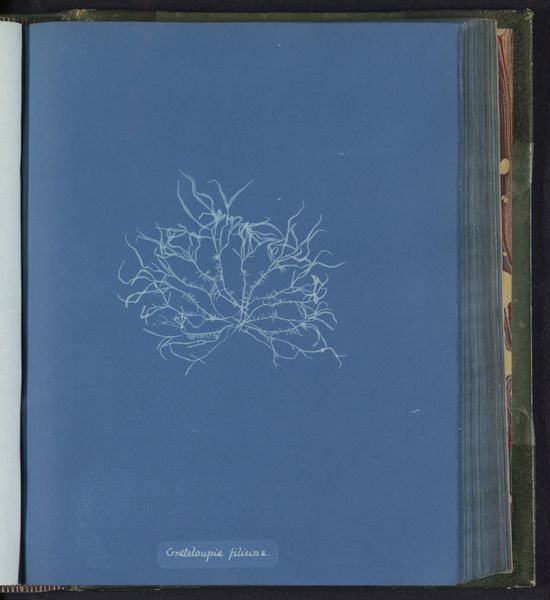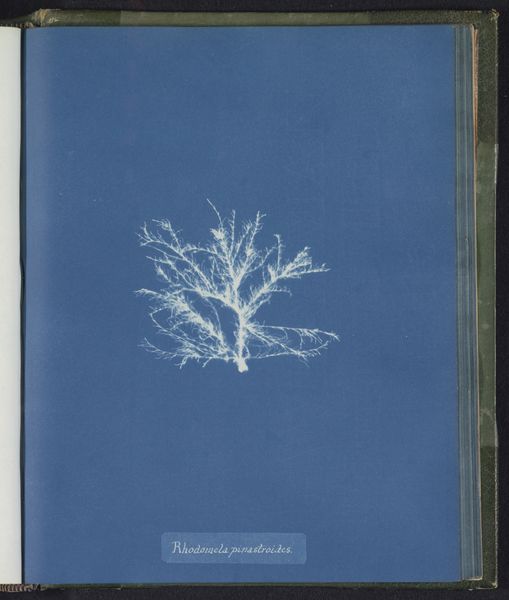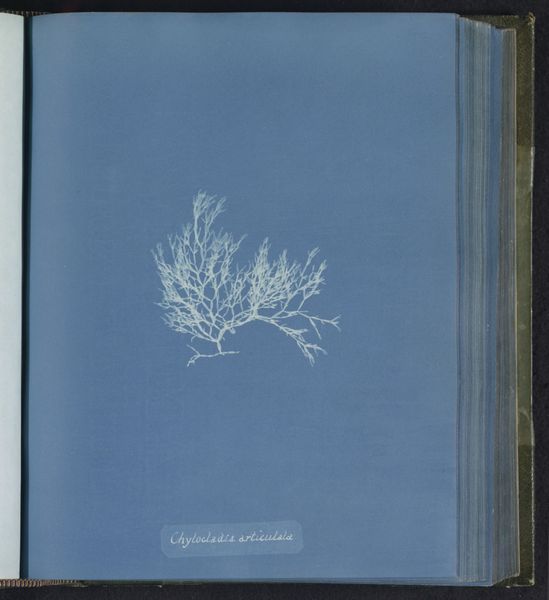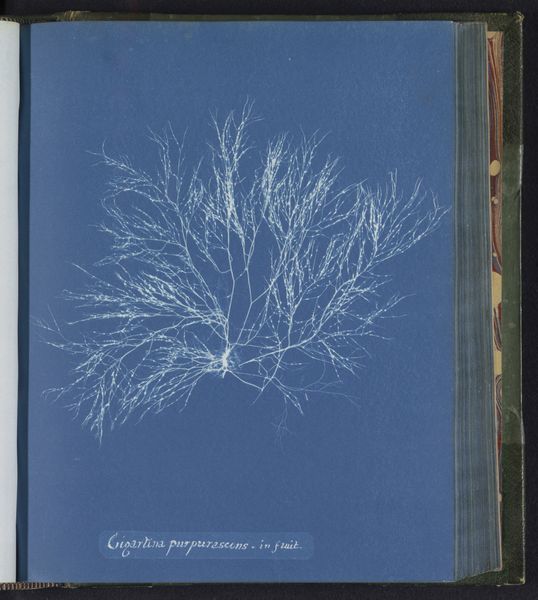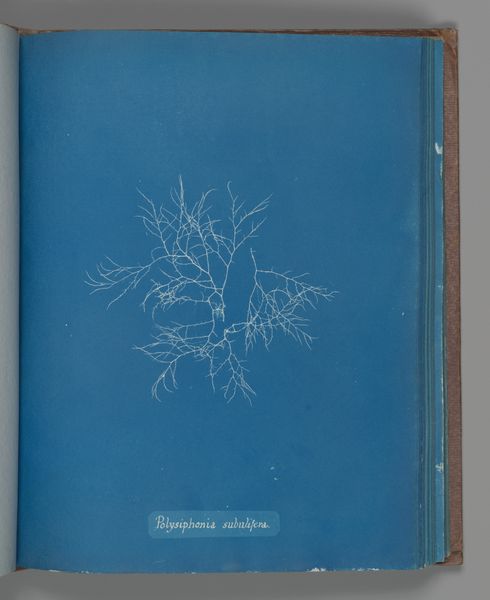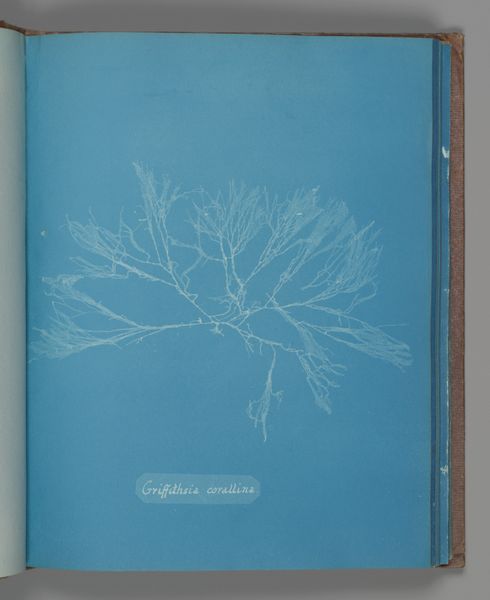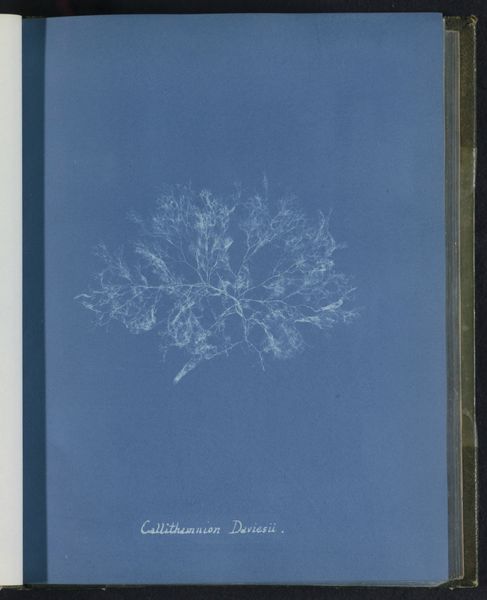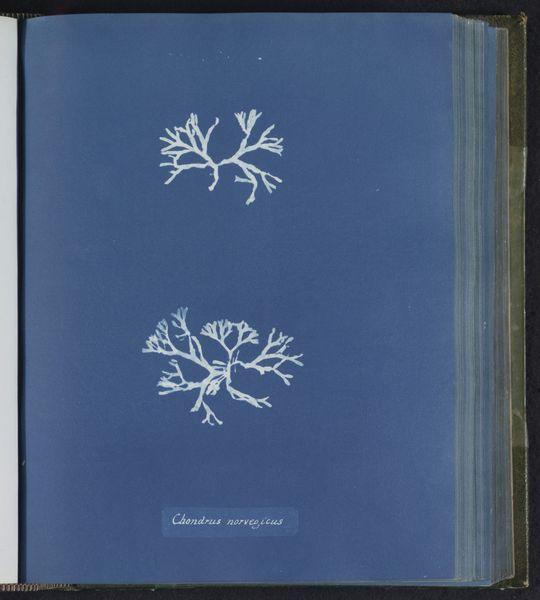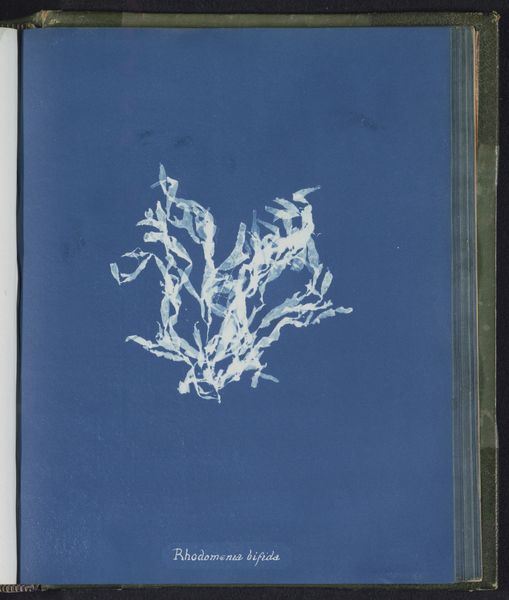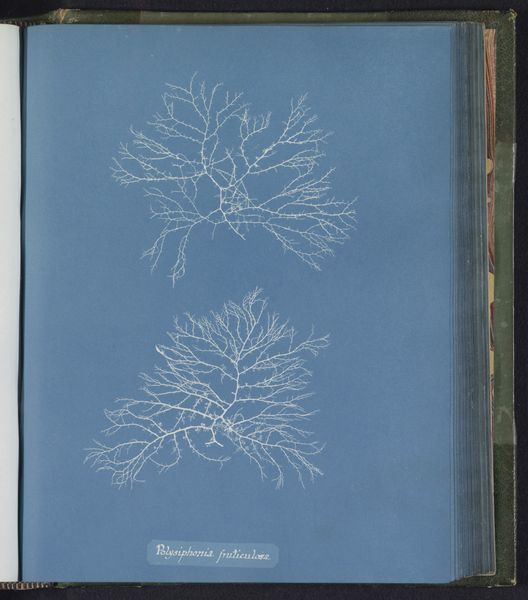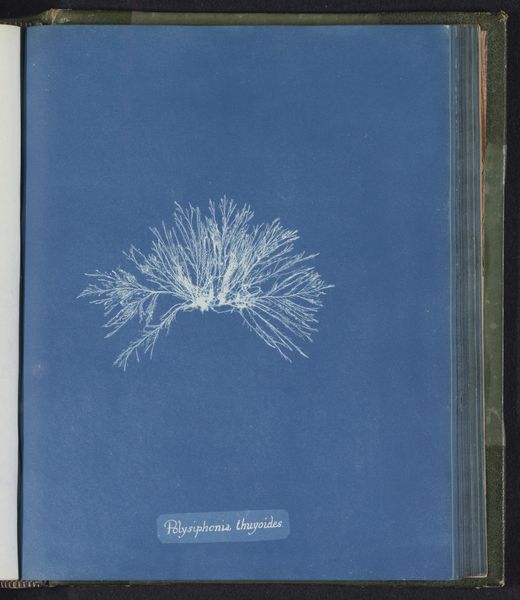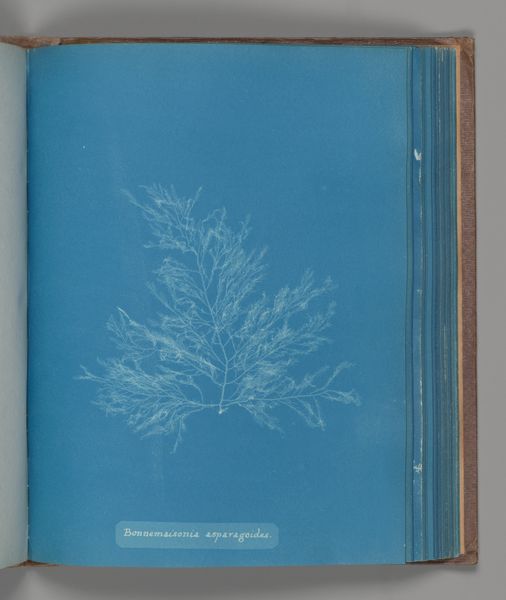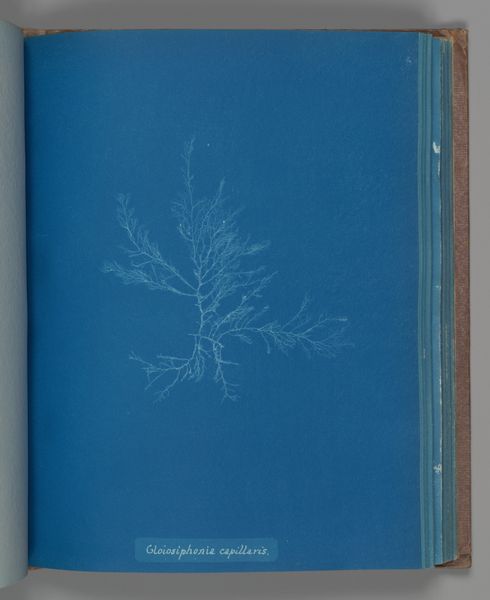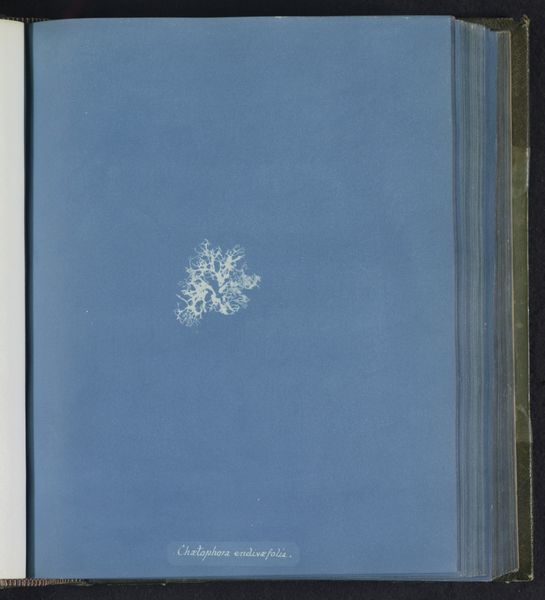
print, cyanotype, photography
# print
#
cyanotype
#
photography
#
line
Dimensions: height 250 mm, width 200 mm
Copyright: Rijks Museum: Open Domain
Editor: Here we have Anna Atkin’s "Polysiphonia subulifera," a cyanotype from around the 1840s. The delicate white lines of the seaweed against the deep blue background are striking. It feels both scientific and ethereal. What catches your eye about this piece? Curator: It's fascinating how Atkins merges art and science. Consider the context: mid-19th century, burgeoning scientific classification, and photography still in its infancy. Cyanotypes were inexpensive and accessible, offering a means of documenting botanical specimens. This image isn't merely representational; it speaks to the democratizing potential of photography. Does the flatness or lack of painterly intervention tell us something about the goals of the work, compared to a botanical illustration? Editor: That’s a great point. So, instead of aiming for artistic expression, she's really participating in a scientific discourse through her images? Curator: Precisely! And consider the role of museums and scientific societies during that period. They needed ways to archive and disseminate information. This cyanotype, reproduced in multiples, would have been circulating knowledge within those circles. Also, it prompts consideration of photography's claim to objectivity; is that claim innocent? Does this not frame it as political from the beginning, by giving certain groups control over truth? Editor: That makes me rethink how I view this artwork. It’s not just a pretty picture of seaweed; it’s a document shaped by the needs and power structures of its time. Curator: Indeed. Looking at it through that lens enriches our understanding immensely. We can then appreciate that an artwork might have scientific, or political meaning within it.
Comments
No comments
Be the first to comment and join the conversation on the ultimate creative platform.
